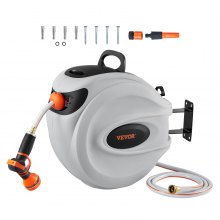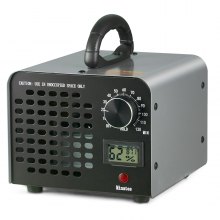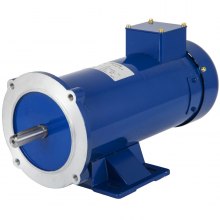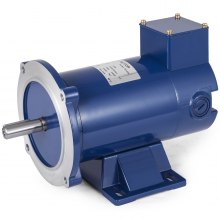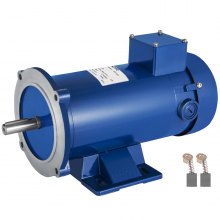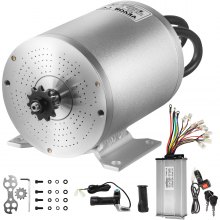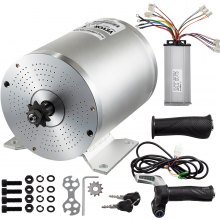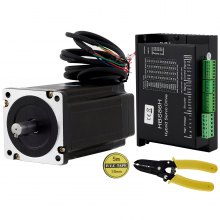Unveiling the Power of DC Motors: Revolutionize Your Projects
DC motors are the silent workhorses behind countless applications, from household appliances to industrial machinery. Understanding their capabilities and applications can significantly enhance your projects. Let’s dive into the world of DC motors and uncover how they can be a game-changer for your endeavors.
What Are DC Motors?
A DC motor is a type of electrical machine that converts direct current electrical power into mechanical power. The beauty of DC motors lies in their simplicity and efficiency. They are used in a plethora of devices due to their controllable speed and high torque.
The Core Components
Understanding the anatomy of a DC motor can help you choose the right one for your needs. Key components include the stator, rotor, brushes, and commutator. Each plays a pivotal role in the motor's operation, influencing performance and suitability for different applications.
Types of DC Motors and Their Applications
Dive into the different types of DC motors: brushed, brushless, and stepper motors. We’ll explore where each type excels, from precision control in robotics to durable, high-speed applications in automotive systems.
Brushed DC Motors: Pros and Cons
Brushed motors are known for their simplicity and cost-effectiveness. However, their brushes wear over time. We'll discuss when to use these motors and how to mitigate their downsides.
Brushless DC Motors: Enhancing Efficiency
Discover the advantages of brushless DC motors, including their longevity and low maintenance. Ideal for applications requiring reliability and efficiency, we’ll delve into how they can optimize your projects.
Stepper Motors: Precision at Its Best
Stepper motors offer unparalleled control, making them perfect for applications requiring precise positioning. Learn about their workings and why they are favored in CNC machines and 3D printers.
Selecting the Right DC Motor
Choosing the right motor can be daunting. We’ll guide you through factors such as torque, speed, and power requirements to help you make an informed decision that aligns with your project's needs.
Understanding Torque and Speed
Grasp the concepts of torque and speed in the context of DC motors. This knowledge is crucial for matching a motor to your application’s specific demands.
Power Requirements and Efficiency
Discover how to balance power requirements with efficiency. This section will help you choose a motor that offers the best performance without unnecessary power consumption.
Size and Weight Considerations
Learn why the size and weight of a DC motor matter, especially in portable or space-constrained applications. We’ll discuss how to find a motor that fits your spatial requirements without compromising on power.
Integrating DC Motors into Your Projects
Integration goes beyond selecting the right motor. We’ll cover electrical connections, control systems, and safety measures to ensure your motor operates smoothly and safely.
Wiring and Electrical Connections
Proper wiring is crucial for performance and safety. This section provides a primer on connecting your DC motor to power sources and control circuits.
Control Systems for DC Motors
Explore the world of control systems, from simple manual controls to sophisticated electronic speed controllers (ESCs). Understanding these systems can significantly enhance your motor’s functionality.
Safety Measures and Maintenance
Learn how to operate DC motors safely and keep them in top condition. Regular maintenance can extend the life of your motor and prevent costly downtime.
Troubleshooting Common Issues
Encountering problems is part of working with any technology. We’ll outline common issues with DC motors and provide troubleshooting tips to help you resolve them quickly.
Future Trends in DC Motor Technology
Stay ahead of the curve by exploring emerging trends in DC motor technology. Innovations in materials and design are making motors more efficient, powerful, and adaptable.
Why Choose VEVOR for Your DC Motor Needs?
Discover the advantages of choosing VEVOR for your DC motor purchases. With a wide range of high-quality motors and exceptional customer service, VEVOR is your trusted partner in bringing your projects to life.
Conclusion: Power Your Projects with the Right DC Motor
Selecting and integrating the right DC motor can dramatically increase the efficiency and performance of your projects. By understanding the types, components, and applications of DC motors, you can make informed decisions that optimize your endeavors.
Take Action: Elevate Your Projects with VEVOR
Don’t let the wrong choice in motors hinder your projects’ potential. Explore VEVOR’s extensive selection of DC motors and find the perfect match for your needs. Elevate your projects and unleash their full potential today.
FAQs about DC Motors
What Are DC Motors Used For?
DC motors are versatile devices used in various applications ranging from small gadgets to large industrial machines. They are commonly found in electric vehicles, household appliances, toys, and power tools. Their ability to provide high torque and precise speed control makes them ideal for applications requiring controlled motion and power, such as robotics, conveyor belts, and lifting mechanisms.
How Do DC Motors Work?
DC motors convert electrical energy into mechanical energy through the interaction of magnetic fields within the motor. A typical DC motor consists of a rotating armature (rotor) and stationary magnets (stator). When electric current passes through the armature, it generates a magnetic field that interacts with the stationary magnets, causing the armature to rotate. This rotation can then be harnessed to perform mechanical work.
What's the Difference Between Brushed and Brushless DC Motors?
The main difference between brushed and brushless DC motors lies in their construction and operation. Brushed DC motors use carbon brushes and a commutator to deliver current to the rotating armature, which can lead to wear and tear over time. Brushless DC motors, on the other hand, have an electronic controller that switches the current in the motor windings, eliminating the need for brushes. As a result, brushless motors tend to be more reliable, efficient, and longer-lasting than their brushed counterparts.
How Can I Determine the Right DC Motor for My Project?
Selecting the right DC motor for your project involves considering several factors, including the required speed, torque, power supply, and overall size and weight constraints. Start by determining the load and speed requirements of your application. Then, choose a motor that can provide the necessary torque at the desired speed while fitting within your project's physical and electrical constraints. It's also essential to consider the control method and the environment in which the motor will operate.
How Do I Maintain and Extend the Life of My DC Motor?
Proper maintenance and care can significantly extend the life of a DC motor. Keep the motor clean and free from debris to prevent overheating. Regularly inspect the brushes and commutator for wear in brushed motors and replace them as needed. Ensure that the bearings are lubricated and that the motor is securely mounted to minimize vibrations. Additionally, avoid overloading the motor and ensure it is used within its intended operational limits.




























